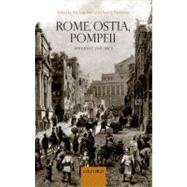
| List of Figures | p. xiii |
| List of Tables | p. Xvii |
| Notes on Contributors | p. xix |
| Introduction: Making Movement Meaningful | p. 1 |
| Articulating Movement and Space | |
| Movement and the Linguistic Turn: Reading Varro's De Lingua Latina | p. 57 |
| Literature and the Spatial Turn: Movement and Space in Martial's Epigrams | p. 81 |
| Measuring Spatial Visibility, Adjacency, Permeability, and Degrees of Street Life in Pompeii | p. 100 |
| Towards a Multisensory Experience of Movement in the City of Rome | p. 118 |
| Movement in the Roman City: Infrastructure and Organization | |
| The Power of Nuisances on the Roman Street | p. 135 |
| Pes Dexter. Superstition and the State in the Shaping of Shopfronts and Street Activity in the Roman World | p. 160 |
| Cart Traffic Flow in Pompeii and Rome | p. 174 |
| Where to Park? Carts, Stables, and the Economics of Transport in Pompeii | p. 194 |
| The Spatial Organization of the Movement Economy: The Analysis of Ostia's Scholae | p. 215 |
| Movement and the Metropolis | |
| The Street Life of Ancient Rome | p. 245 |
| The City in Motion: Walking for Transport and Leisure in the City of Rome | p. 262 |
| Movement and Fora in Rome (the Late Republic to the First Century ce) | p. 290 |
| Movement, Gaming, and the Use of Space in the Forum | p. 312 |
| Construction Traffic in Imperial Rome: Building the Arch of Septimius Severus | p. 332 |
| Movement and Urban Development at Two City Gates in Rome: The Porta Esquilina and Porta Tiburtina | p. 361 |
| Endpiece: From Movement to Mobility: Future Directions | p. 386 |
| Bibliography | p. 402 |
| Index | p. 441 |
| Table of Contents provided by Ingram. All Rights Reserved. |
The New copy of this book will include any supplemental materials advertised. Please check the title of the book to determine if it should include any access cards, study guides, lab manuals, CDs, etc.
The Used, Rental and eBook copies of this book are not guaranteed to include any supplemental materials. Typically, only the book itself is included. This is true even if the title states it includes any access cards, study guides, lab manuals, CDs, etc.